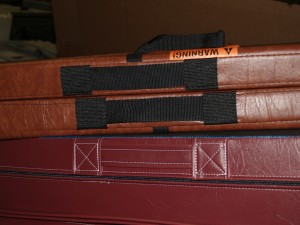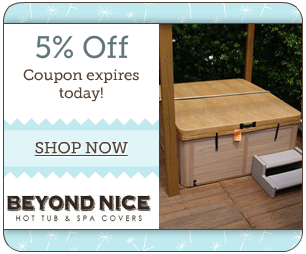The Pros are asked, almost once every day, “What features would you recommend for my replacement cover?” In this post, we will present a list of features and a very brief statement explaining each feature and when, or in what circumstances, it would be useful.
This list can also be used as a score card when examining the offerings from various stores. Since every cover is custom made to order, each of the items below SHOULD be available to be specified when buying a replacement cover.
- Thickness– The typical range of cover thicknesses follow. The thicker the cover, the better it will insulate.
- 6″ to 4″ taper
- 5″ to 3″ taper
- 4″ to 2″ taper
- 4″ thick and flat
- 5″ thick and flat
- Foam density– The more dense the foam, the stronger the cover will be to hold weight such as snow, animals, children, etc. Typically, these densities are available:
- 1.0 pound density
- 1.5 pound density
- 2.0 pound density
- Manufacturers will use either virgin EPS foam or they will used recycled foam which is not as strong
- C-Channel – Each panel in a spa cover will have a C shaped strip of metal across the fold to provide strength across the cover so it does not dip or bend. Typically, these are made either of galvanized steel or aluminum. The galvanized steel is 30% stronger but the aluminum will never rust.
- Vapor Barrier – The foam cores are sealed inside a vapor barrier so they do not absorb water and become heavy. There are various grades and thicknesses of vapor barrier available. The better the vapor barrier, the longer the cover will last before it water logs
- Steam Stopper Pillows – These are typical in base models of covers. These “pillows” keep heat from being lost at both ends of the fold and span the gap between the two cover panels
- Long Steam Stopper– Steam stopper pillows can be replaced with an additional length of foam that fills the gap between the two cover panels across the entire cover, not just at each end as the steam stopper pillows do.
- Reinforced Hinge – For spa covers that will hang from cover lifter or removal system bars, some manufacturers can add additional reinforcement to the hinge between the two cover panels, to hold the weight of the cover when hanging from the lifter bar.
- Fold Direction – For covers that are not symmetric, the buyer can specify which side to fold in half to facilitate easier entry into the hot tub when folding only half of the cover back.
- Additional Tie Down Straps – For windy locations, additional tie down straps can sometimes be added to insure a good seal by the cover, and to keep the cover from blowing away.
- Tie Down Strap Locations – For a replacement cover, the buyer should be able to specify the location of the clips mounted to the side of the hot tub cabinet. This way, the new replacement spa cover tie down straps will align to these existing clips so additional holes won’t have to be made in the cabinet, and so the holes are not left from the previous location of the now unused clips.
- Skirt Length – The role of the cover’s skirt is to keep the sun’s UV rays from damaging the acrylic lip of the hot tub that is outside the protection of the cover. Long skirt lengths should be available although there will likely be an additional charge.
- Split Corner Skirt – A split corner skirt makes closing the hot tub cover easier, as the cover skirt will tend to fold under the cover. The split corner helps prevent this from happening. If the skirt is folded under the cover, the seal the cover is supposed to make with the top of the tub is broken and heat loss will occur until this is corrected.
- Internal Hardware for Lifter Attachment – Some cover lifter manufacturers, Hot Spring being one of them, require hardware inside the spa cover for their lifter to attach into the cover. Check to see if your lifter has this requirement, then make sure the cover you buy is able to be upgraded with the necessary internal hardware.
- Speaker Pockets – For spas that have raised speakers, the cover can be manufactured with the foam cores cut back to allow for the speakers. Then, the vinyl is extended over the speaker as a sort of pocket, to protect the speaker and acrylic from the elements.
- Control Panel Cut Out or Dig Out – For spas with a control panel on the top of the spa, the lid can be custom cut around the control panel area OR the cover can have a “dig out” made into the foam over the control panel, so it will close flush with the rest of the top of the spa.
- Contrast Stitching – spa tops can be sewn either with matching or contrast stitching, depending upon the look you are seeking.
- Inside or Gazebo Handles – in tight locations, such as in a spa fitting Gazebo enclosure, handles can be placed INSIDE the cover, across the fold, to allow easier manipulation from in the hot tub.
- Walk On Covers – For deck flush installations, a Walk On hottub cover is typically necessary to protect from someone stepping or walking across the cover and falling through.
Not all these features are important to everyone, but this list should help you to decide what features are of interest to you. Future posts will discuss each of these features individually and in great depth.
Happy Tubbing!
Ethel Elliott



